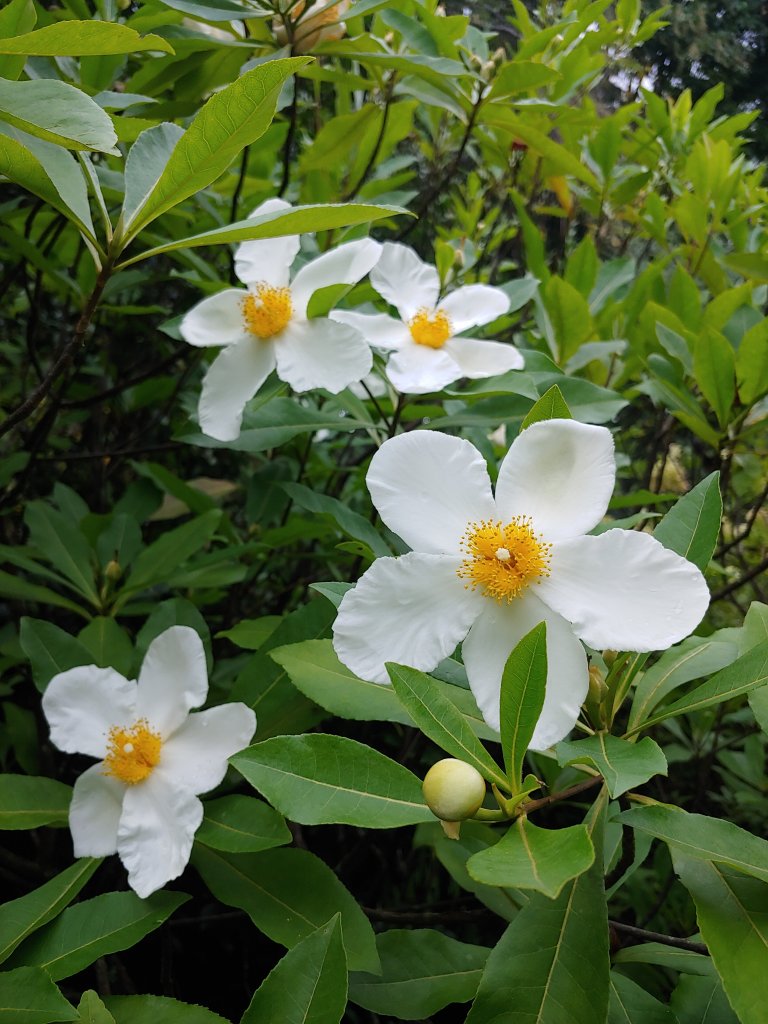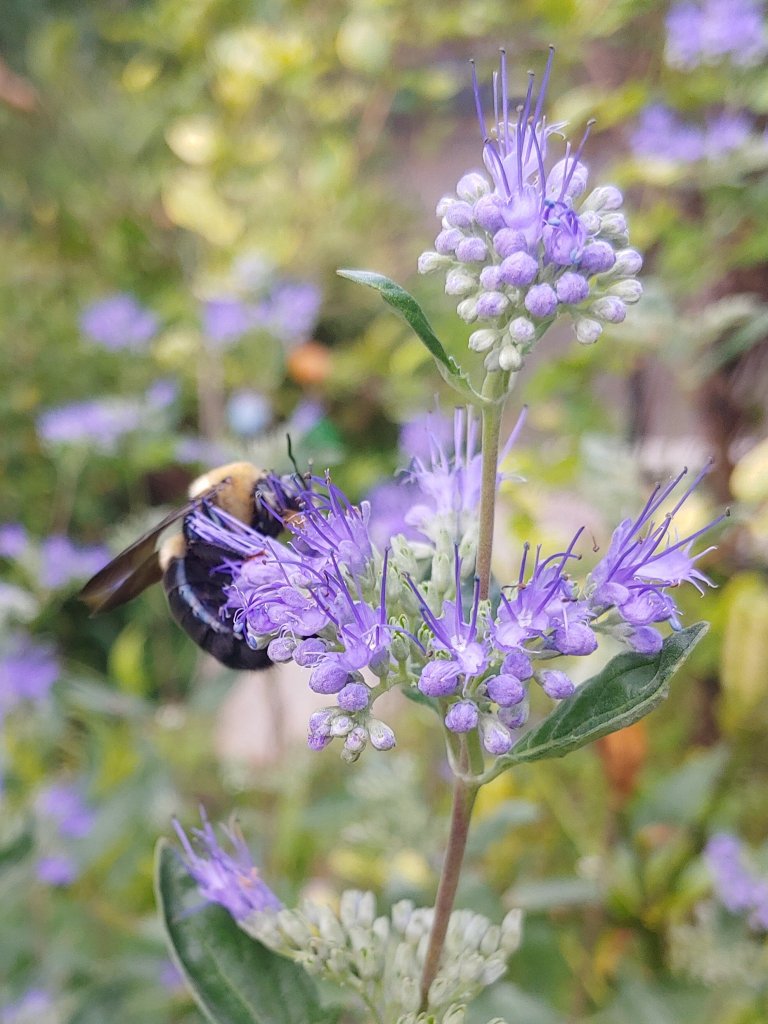A bit of a decline in the late summer garden is expected, but I think most of this is the gardeners’ weariness battling the heat and short periods of drought. There is not a dramatic change in September except that cooler temperatures arrive and I roam the garden more, not only lounging in the shade. While the number of flowers might not differ much from August into September, the late summer bloomers are among my favorites.

The camellia-like flowers of gordlinia (x Gordlinia grandiflora, above) first appear early in August, then continue sporadically into mid-September. This shrubby tree is perfectly located behind tall perennials so that its unremarkable multiple trunks are well hidden, but its large blooms stand above its neighbors. While gordlinia’s flowers and foliage should earn a front row seat, inevitably the evergreen leaves turned a crispy brown after even the mildest winter.

Roses are scarce in the garden since I do not care to spray for any bug, disease, or fungus, but one old rose (above), its name long forgotten, stands out in late summer from beneath a wide spreading holly. The leaves are free of spots that disfigure so many roses in our humidity, though perhaps reflected heat from the asphalt driveway burns off any spores.

The patch of seedling coneflowers (Echinancea purpurea, above) has been deadheaded, out of the ordinary for this garden, but the blackened seed heads arched unattractively onto the driveway. Some are budding again, and both reblooming hydrangeas and coneflowers are likely to flower again after the seed heads have been removed.

Bees are constant visitors to the variety of blue mist shrubs (Caryopteris, above) that are nearing the close of their month long bloom cycle. The foliage of blue mist is slow to get started in spring, but most varieties have pleasing blue-green or yellow leaves.

Most of the Joe Pye weeds (above) are weeks past bloom, except several that were pruned in late spring by deer. These have fattened up, and now they’re flowering to the delight of the resident swallowtails.

The flowering cycle for reblooming Encore azaleas is inexact, to say the least. A number of factors determine if the late summer/ autumn cycle will flower heavily, or at all. The most dependable in this garden is ‘Autumn Carnation’, but it appears its September flowering will be light this year.

While several toad lilies (Tricyrtis) have flowered since early August, the peak for most is a week or two away. The late flowering types will then bloom continuously until the first frost, even if this is delayed into November.

The daphnes are flowering (Daphne x transatlantica ‘Summer Ice’, above), but that’s no surprise since all but ‘Carol Mackie’ have been in bloom to varying degrees since late March. A recent visitor remarked on a pleasant scent while walking through the garden. I looked twice before noticing a nearby ‘Eternal Fragrance’.
What a relief to see your comments on toad lilies. I had been watering and feeding and worrying about ours which had no signs of flowering but looked healthy. Enjoy and learn from your posts, please keep them coming. Gardening on Reno Road in NW DC, a passerby said she loved my ‘natural’ gardening style. I think she meant ‘untidy’.
Today I see the first flower of ‘Miyazaki’, but these are earlier in nearly full sun. Several toad lilies if more shade are budding, but a week or two from bloom.